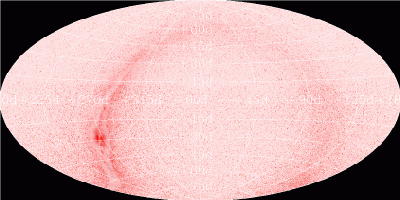
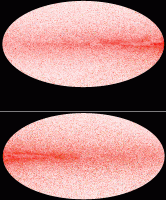
The spatial coverage of extended sources is limited by the presence of foreground stars. Bright stars block out large halo and long diffraction spike areas (see II.3d1). The coverage area is computed for each Atlas Image for each band. The typical high |glat| coverage (during the absense of very bright stars) is >98%, thus representing very good spatial coverage overall. The spatial Coverage for the southern hemisphere 2MASS scan ("044") observed 2000 April 22 is given in II.3d1, Table 1. The coordinates refer to the center of the Atlas Image, size 512´´×1024´´. The mean coverage per Atlas Image is specified by "fj" (J-band coverage), "fH" (H-band), and "fK" (Ks-band), normalized to unity.
i. All-Sky Coverage Map
Figure 1 shows the J-band coverage with an equal-area Aitoff projection in the equatorial system. The coverage ranges from 0 to 1 (dark red to white). Figure 1 shows coverage in Aitoff Galactic projection. The top panel of the figures shows 0° < glon < 180°, and the bottom panel shows 180° < glon < 360°.
 |
 |
| Figure 1 | Figure 2 |
ii. Tangent Projection Coverage Maps
The sky is divided into four 6-hour quadrants per equatorial hemisphere, and each coverage map is generated using a tangent projection (for convenience to the user). A summary of the statistics per quadrant is given in the following table:
| glon | glat | fJ | fH | fK |Area(J)|Area(H)|Area(K)| 0 - 90 0 - 90 0.995 0.993 0.996 5131.94 5122.05 5136.16 90 - 180 0 - 90 0.997 0.997 0.998 5142.00 5139.54 5145.36 180 - 270 0 - 90 0.998 0.998 0.999 5147.07 5145.60 5149.78 270 - 360 0 - 90 0.991 0.987 0.992 5108.59 5089.47 5113.78 | glon | glat | fJ | fH | fK |Area(J)|Area(H)|Area(K)| 0 - 90 -90 - 0 0.997 0.998 0.998 5141.75 5145.31 5147.33 90 - 180 -90 - 0 0.991 0.990 0.993 5107.21 5104.53 5117.40 180 - 270 -90 - 0 0.986 0.985 0.988 5084.58 5078.85 5093.64 270 - 360 -90 - 0 0.992 0.992 0.994 5115.08 5115.88 5122.87 glon is the range in Galactic longitude glat is the range in Galactic latitude fJ,fH,fK is the mean fractionl coverage for J,H,Ks respectively Area(J),Area(H),Area(K) is the total area (deg^2) for J,H,Ks respectively.
In FITS format (previews in GIF format).
| Declination Range | 0h < RA < 6h | 6h < RA < 12h | 12h < RA < 18h | 18h < RA < 24h | ||||||||
| 0° < dec < 90° |
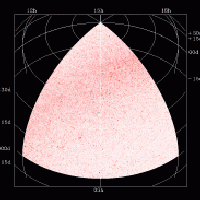 FITS image |
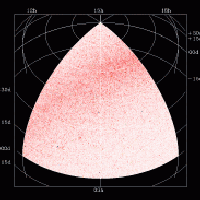 FITS image |
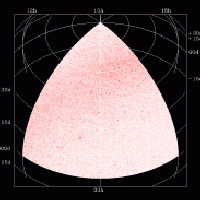 FITS image |
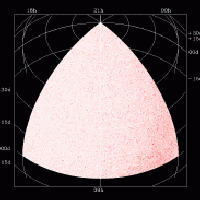 FITS image |
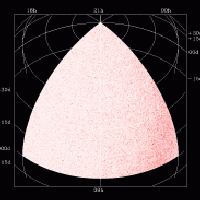 FITS image |
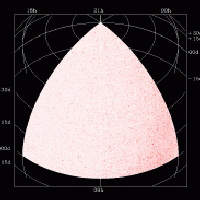 FITS image |
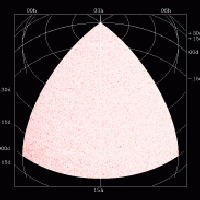 FITS image |
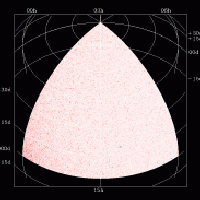 FITS image |
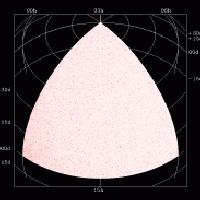 FITS image |
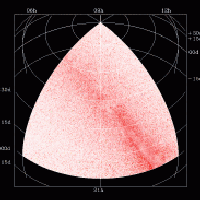 FITS image |
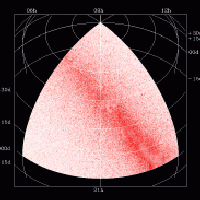 FITS image |
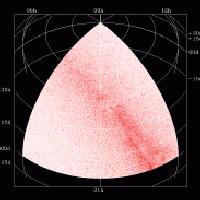 FITS image |
| Figure 3 | Figure 4 | Figure 5 | Figure 6 | Figure 7 | Figure 8 | Figure 9 | Figure 10 | Figure 11 | Figure 12 | Figure 13 | Figure 14 | |
| -90° < dec < 0° |
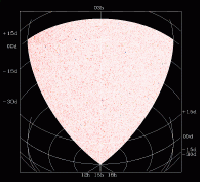 FITS image |
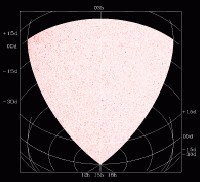 FITS image |
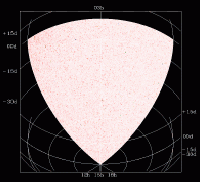 FITS image |
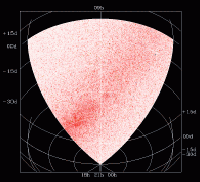 FITS image |
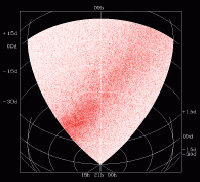 FITS image |
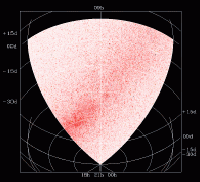 FITS image |
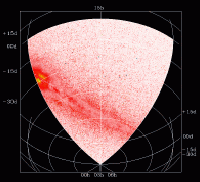 FITS image |
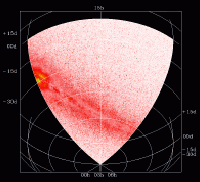 FITS image |
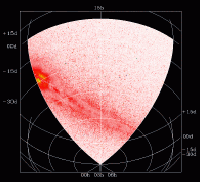 FITS image |
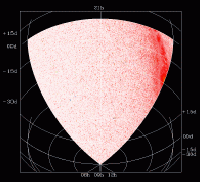 FITS image |
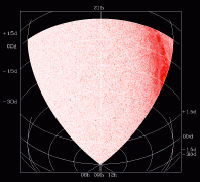 FITS image |
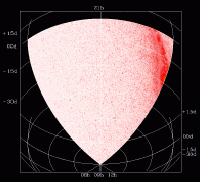 FITS image |
| Figure 15 | Figure 16 | Figure 17 | Figure 18 | Figure 19 | Figure 20 | Figure 21 | Figure 22 | Figure 23 | Figure 24 | Figure 25 | Figure 26 | |
The FITS images are tangent projections in the equatorial system, showing the fractional coverage of the XSC, ranging from 0.0 (i.e., no coverage) to 1.0 (i.e., perfect coverage). The pixel size is 8.53´, matching the cross-scan size scale of the Atlas Images. The images are centered on the quadrant and are fully WCS (world coordinate system) functional.
A sample header is given here:
BITPIX = -32
NAXIS = 2
NAXIS1 = 632
NAXIS2 = 632
BSCALE = 1.
BZERO = 0.
EQUINOX = 2000. / Equinox
CTYPE1 = 'RA---SIN' / Orthographic Projection
CTYPE2 = 'DEC--SIN' / Orthographic Projection
CRVAL1 = 315. / RA at Frame Center, J2000 (deg)
CRVAL2 = 45. / Dec at Frame Center, J2000 (deg)
CRPIX1 = 316.5
CRPIX2 = 316.5
CROTA2 = 0. / Image Twist E of N, J2000 (deg)
CDELT1 = -0.1421999931 / Axis 1 Pixel Size (degs)
CDELT2 = 0.1421999931 / Axis 2 Pixel Size (degs)
COMMENT1= '2MASS J-band Spatial Coverage Map'
COMMENT2= 'pixel values represent the average spatial coverage per grid area'
For additional information, see Section II.3d1.
[Last Updated: 2003 Jan 29; by T. Jarrett]
Return to II.6.